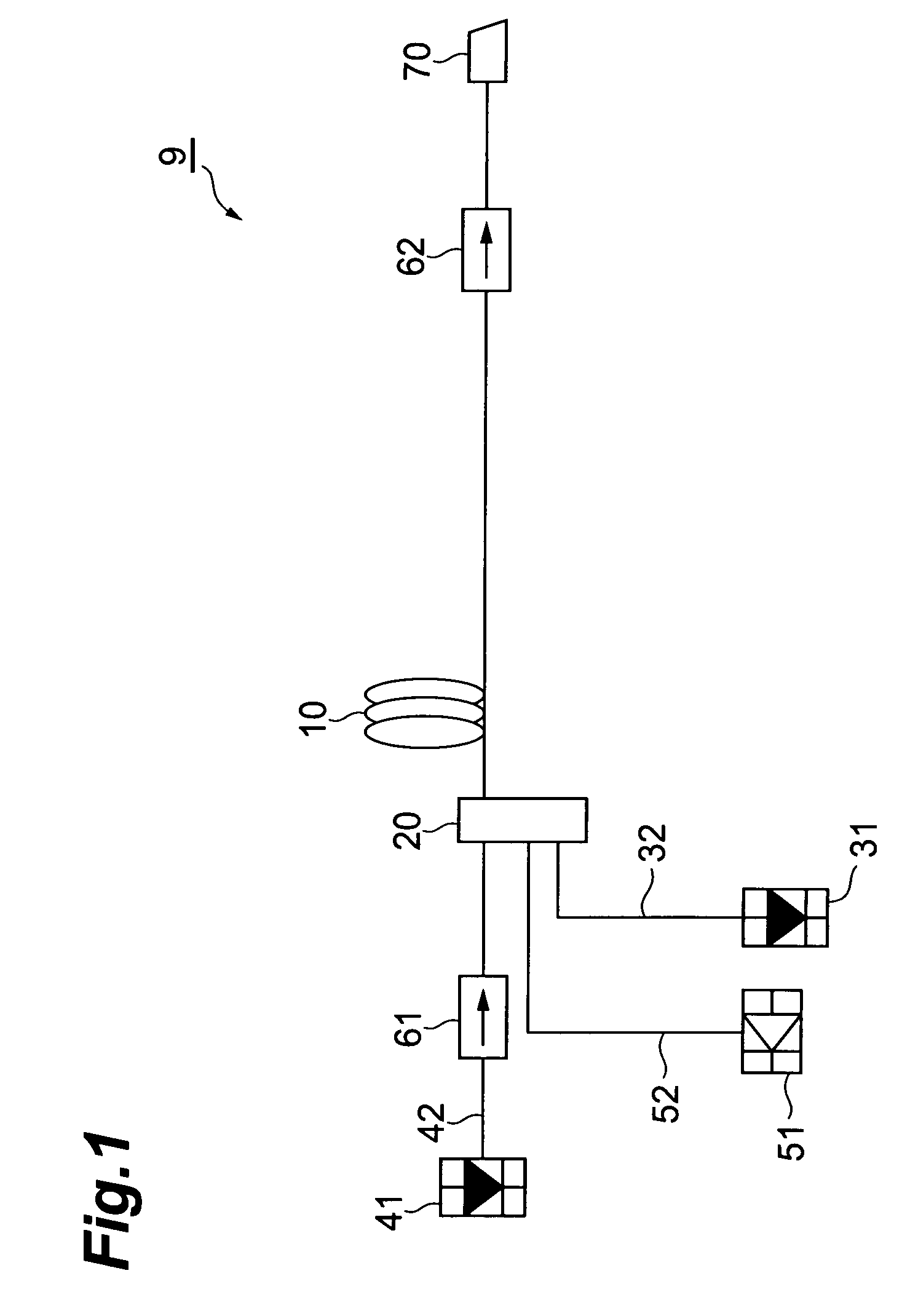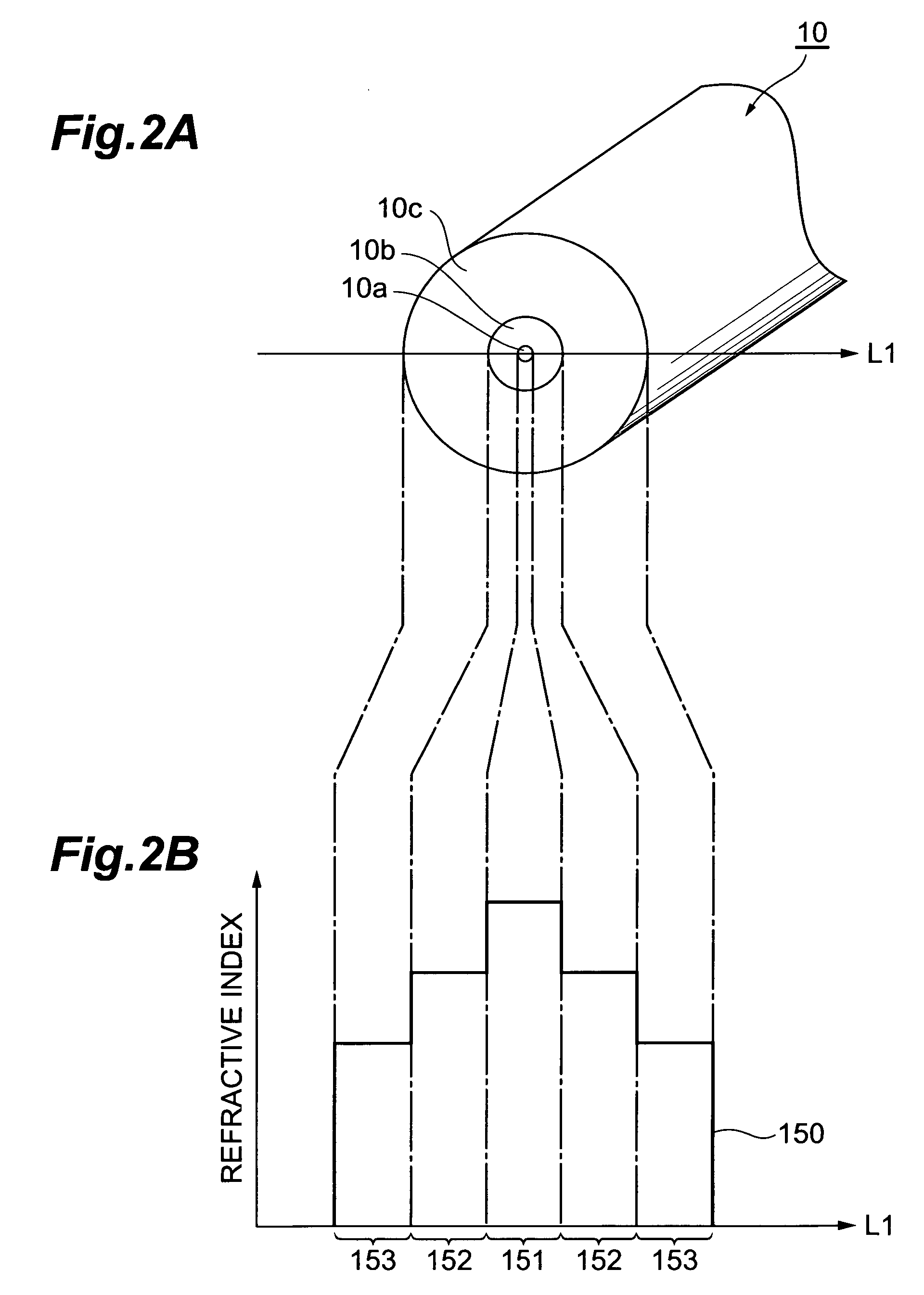Optical module
- Summary
- Abstract
- Description
- Claims
- Application Information
AI Technical Summary
Benefits of technology
Problems solved by technology
Method used
Image
Examples
first embodiment
[0050]Subsequently, a first embodiment of the optical module according to the present invention will be described. FIG. 6 shows the constitution of the first embodiment of the optical module according to the present invention. The optical module 1 shown in FIG. 6 comprises an amplification optical fiber 10, an optical coupler 20, an pumping light source 31, a delay optical fiber 32, a seed light source 41, an optical fiber 42, a photodetector 51, an optical fiber 52, an optical isolator 61, an optical isolator 62, and a control section 91.
[0051]As compared with the constitution of the optical module 9 according to the comparative example shown in FIG. 1, the optical module 1 according to the first embodiment shown in FIG. 6 differs in that a delay optical fiber 300 having a desired length is provided between the pumping light source 31 and optical coupler 20. Further, the comparative example differs from the first embodiment also in that the comparative example comprises control sec...
second embodiment
[0059]Next, a second embodiment of the optical module according to the present invention will be described. FIG. 9 shows the constitution of the second embodiment of the optical module according to the present invention. The optical module 2 shown in FIG. 9 comprises an amplification optical fiber 10, an optical coupler 20, a pumping light source 31, a delay optical fiber 300, an optical device 33, a seed light source 41, an optical fiber 42, a photodetector 51, an optical fiber 52, an optical isolator 61, an optical isolator 62, and a control section 92.
[0060]In comparison with the constitution of the optical module 1 according to the first embodiment shown in FIG. 6, the optical module 2 according to the second embodiment shown in FIG. 9 differs in that the optical device 33 is provided between the pumping light source 31 and delay optical fiber 300. In addition, the second embodiment differs from the first embodiment in that the control section 92 is provided in place of the cont...
third embodiment
[0063]Next, a third embodiment of the optical module according to the present invention will be described. FIG. 10 shows the constitution of the third embodiment of the optical module according to the present invention. The optical module 3 shown in FIG. 10 comprises an amplification optical fiber 10, an optical coupler 20, a pumping light source 31, a delay optical fiber 300, a seed light source 41, an optical fiber 42, a photodetector 51, an optical fiber 52, an optical isolator 61, an optical isolator 62, and a control section 93.
[0064]In comparison with the constitution of the optical module 1 according to the first embodiment shown in FIG. 6, the optical module 3 according to the third embodiment shown in FIG. 10 differs in that the third embodiment comprises a control section 93 in place of the control section 91.
[0065]In accordance with the third embodiment, the control section 93 stops the output of the seed light source 41 which outputs seed light or reduces the intensity t...
PUM
 Login to View More
Login to View More Abstract
Description
Claims
Application Information
 Login to View More
Login to View More - R&D
- Intellectual Property
- Life Sciences
- Materials
- Tech Scout
- Unparalleled Data Quality
- Higher Quality Content
- 60% Fewer Hallucinations
Browse by: Latest US Patents, China's latest patents, Technical Efficacy Thesaurus, Application Domain, Technology Topic, Popular Technical Reports.
© 2025 PatSnap. All rights reserved.Legal|Privacy policy|Modern Slavery Act Transparency Statement|Sitemap|About US| Contact US: help@patsnap.com



